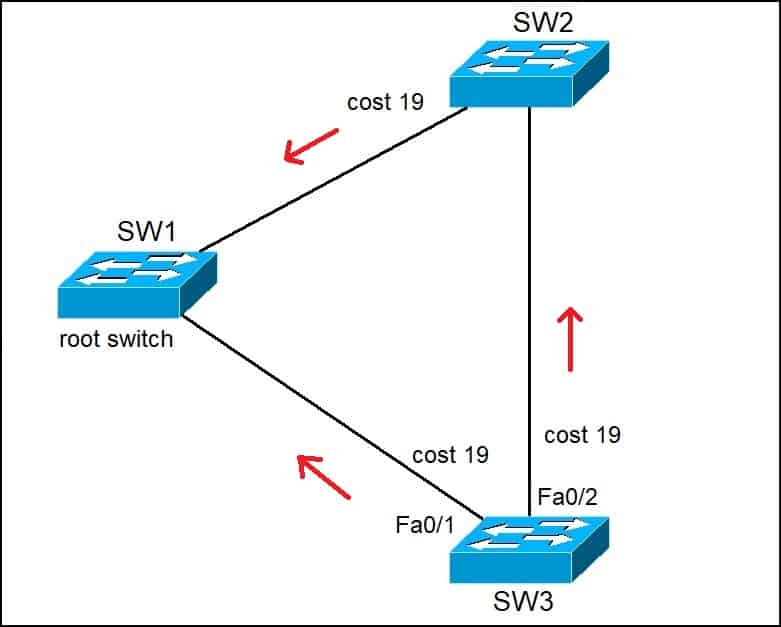As we’ve mentioned before, all working interfaces on the root switch are placed in forwarding state. All other switches (called nonroot switches) determine the best path to get to the root switch and the port used to reach the root switch is placed in forwarding state. The best path is the one with the lowest cost to reach the root switch. The cost is calculated by adding the individual port costs along the path from the switch to the root.
Take a look the following example:
SW1 has won the election process and is the root switch. Consider the SW3’s perspective for choosing its root port. Two paths are available to reach the root switch, one direct path over Fa0/1 and the other going out Fa0/2 and through SW2. The direct path has a cost of 19, while the indirect path has the cost of 38 (19+19). That is why Fa0/1 will become the root port on SW3.
In case the best root cost ties for two or more paths, the following tiebreakers are applied:
- the lowest neighbor bridge ID
- the lowest neighbor port priority
- the lowest neighbor internal port number
The default port cost is defined by the operating speed of the interface:
| Speed | Cost |
|---|---|
| 10 Mbps | 100 |
| 100 Mbps | 19 |
| 1 Gbps | 4 |
| 10 Gbps | 2 |
You can override the default value on the per-interface basis using the following command:
(config-if)#spanning-tree cost VALUE
Download our Free CCNA Study Guide PDF for complete notes on all the CCNA 200-301 exam topics in one book.
We recommend the Cisco CCNA Gold Bootcamp as your main CCNA training course. It’s the highest rated Cisco course online with an average rating of 4.8 from over 30,000 public reviews and is the gold standard in CCNA training:

